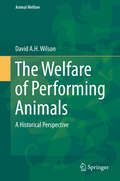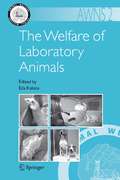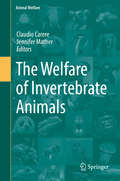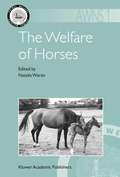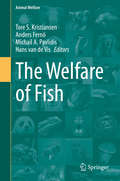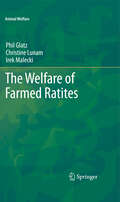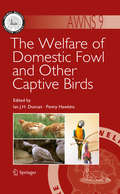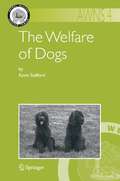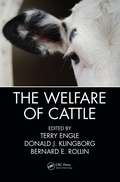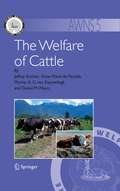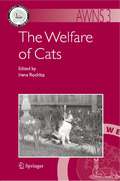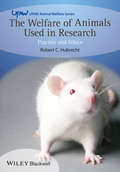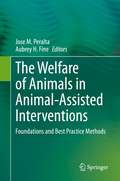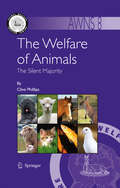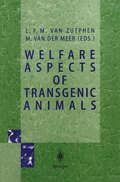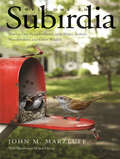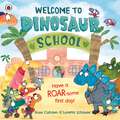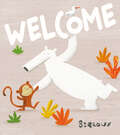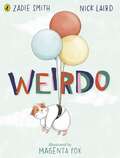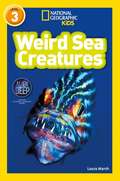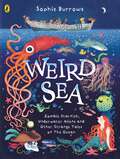- Table View
- List View
The Welfare of Performing Animals: A Historical Perspective (Animal Welfare #15)
by David A. WilsonThis timely book describes and analyses a neglected area of the history of concern for animal welfare, discussing the ends and means of the capture, transport, housing and training of performing animals, as well as the role of pressure groups, politics, the press and vested interests. It examines primary source material of considerable interdisciplinary interest, and addresses the influence of scientific and veterinary opinion and the effectiveness of proposals for supervisory legislation, noting the current international status and characteristics of present-day practice within the commercial sector.Animal performance has a long history, and at the beginning of the twentieth century this aspect of popular entertainment became the subject not just of a major public controversy but also of prolonged British parliamentary attention to animal welfare.Following an assessment of the use of trained animals in the more distant historical past, the book charts the emergence of criticism and analyses the arguments and evidence used by the opponents and proponents in Britain from the early twentieth century to the present, noting comparable events in the United States and elsewhere.
The Welfare of Laboratory Animals (Animal Welfare #2)
by Eila KalisteThis book examines the general principles of laboratory animal maintenance and experimental use as well as factors that have to be taken into account when good research is done with animals. In addition, it provides species specific coverage, concentrating on the species most used as laboratory animals. The book gives a comprehensive description of the welfare questions considered to be important for each species under laboratory conditions.
The Welfare of Invertebrate Animals (Animal Welfare #18)
by Claudio Carere Jennifer MatherThis book is devoted to the welfare of invertebrates, which make up 99% of animal species on earth. Addressing animal welfare, we do not often think of invertebrates; in fact we seldom consider them to be deserving of welfare evaluation. And yet we should. Welfare is a broad concern for any animal that we house, control or utilize – and we utilize invertebrates a lot. The Authors start with an emphasis on the values of non-vertebrate animals and discuss the need for a book on the present topic. The following chapters focus on specific taxa, tackling questions that are most appropriate to each one. What is pain in crustaceans, and how might we prevent it? How do we ensure that octopuses are not bored? What do bees need to thrive, pollinate our plants and give us honey? Since invertebrates have distinct personalities and some social animals have group personalities, how do we consider this? And, as in the European Union’s application of welfare consideration to cephalopods, how do the practical regulatory issues play out?We have previously relegated invertebrates to the category ‘things’ and did not worry about their treatment. New research suggest that some invertebrates such as cephalopods and crustaceans can have pain and suffering, might also have consciousness and awareness. Also, good welfare is going to mean different things to spiders, bees, corals, etc. This book is taking animal welfare in a very different direction. Academics and students of animal welfare science, those who keep invertebrates for scientific research or in service to the goals of humans, as well as philosophers will find this work thought-provoking, instructive and informative.
The Welfare of Horses (Animal Welfare #1)
by N. WaranThis book describes the development of horse behaviour, and the way in which the management of horses today affects their welfare. Horses for sport, companionship and work are considered and ways of improving their welfare by better training and management is described. The book assesses welfare, nutrition, and behaviour problems with horses. The authors include internationally-recognised scientists from Britain, Ireland, USA and Australia.
The Welfare of Fish (Animal Welfare #20)
by Tore S. Kristiansen Anders Fernö Michail A. Pavlidis Hans van de VisThis book investigates how fish experience their lives, their amazing senses and abilities, and how human actions impact their quality of life. The authors examine the concept of fish welfare and the scientific knowledge behind the inclusion of fish within the moral circle, and how this knowledge can change the way we treat fish in the future. In many countries fish are already protected by animal welfare legislation in the same way as mammals, but in practice there is still a major gap between how we ethically view these groups and how we actually treat them. The poor treatment of fish represents a massive animal welfare problem in aquaculture and fisheries, both in terms of the number of animals affected and the severity of the welfare issues. Thanks to its interdisciplinary scope, this thought-provoking book appeals to professionals, academics and students in the fields of animal welfare, cognition and physiology, as well as fisheries and aquaculture management.
The Welfare of Farmed Ratites (Animal Welfare #11)
by Phil Glatz, Christine Lunam and Irek MaleckiThis volume reviews, for the first time, the broad range of issues that affect the welfare of commercially farmed ratites. Although ratites incorporate several families of flightless birds this book focuses on the most commonly farmed ratites, the ostrich, emu and rhea. The readers are taken on a journey through all sectors of the industry, which include breeding, incubation, hatching, brooding, rearing, growth, transport and processing, with an emphasis on husbandry and management protocols that can impact bird welfare and health. Also discussed is the structure and sensory innervation of the skin and digits of the birds, and the potential welfare implications of industry practices on these structures. Each chapter in this volume focuses on a particular aspect of the commercial farming of ratites with contributing authors from a broad range of disciplines.
The Welfare of Domestic Fowl and Other Captive Birds (Animal Welfare #9)
by Ian J. H. Duncan Penny HawkinsAnimal welfare is attracting increasing interest worldwide, especially in developed countries where the knowledge and resources are available to (at least potentially) provide better management systems for farm animals, as well as companion, zoo and laboratory animals. The key requirements for adequate food, water, a suitable environment, appropriate companionship and good health are important for animals kept for all of these purposes. There has been increased attention given to farm animal welfare in many co- tries in recent years. This derives largely from the fact that the relentless pursuit of nancial reward and ef ciency, to satisfy market demands, has led to the devel- ment of intensive animal production systems that challenge the conscience of many consumers in those countries. In developing countries, human survival is still a daily uncertainty, so that p- vision for animal welfare has to be balanced against human needs. Animal welfare is usually a priority only if it supports the output of the animal, be it food, work, clothing, sport or companionship. In principle the welfare needs of both humans and animals can be provided for, in both developing and developed countries, if resources are properly husbanded. In reality, however, the inequitable division of the world’s riches creates physical and psychological poverty for humans and a- mals alike in many parts of the world.
The Welfare of Dogs (Animal Welfare #4)
by Kevin StaffordThis book is one of a series of textbooks on the Welfare of Animals. This book discusses the welfare of dogs used for many different purposes. The book has an international perspective on the welfare of dogs in developed and under-developed countries. The welfare of laboratory dogs which is of concern to many people is discussed, as is the welfare of animals held in shelters waiting for re-homing or euthanasia. The book successfully combines an appreciation of how the health and nutrition of dogs has improved with an understanding of the social difficulties dogs experience. The book’s outlook on the subject of dog welfare is positive.
The Welfare of Cattle
by Terry Engle Donald J. Klingborg, DVM Bernard E. RollinContains a selection of White Papers, commissioned to better inform the exploration of cattle welfare. These are prepared by notable experts in their field, to help provide factual context around selected topics that impact cattle welfare and production systems. Covers all aspects of cattle use in an accessible style, making this a must have volume for anyone interested in cattle welfare or cattle medicine. Provides an in-depth picture of the distinctive beef and dairy cattle welfare practices and issues, covering topics such as behavior, breeding and genetic manipulation, nutrition and feeding, housing and management, health and disease, and transport and slaughter. Written by acknowledged leaders in animal science, veterinary science, philosophy and animal welfare, presenting a truly multidisciplinary perspective on cattle welfare. Includes a section on understanding and managing animal welfare in both beef and dairy cattle, discussing how cattle perceive the world, animal handling and pain mitigation, and how to assure that the cows have a reasonably good life. The Welfare of Cattle offers an accurate, detailed account of the ethical and welfare concerns related to the human use of cattle. There is currently no significant book dealing with the welfare of cows, animals often seen as archetypal paradigms of 'farm animals'. Covering both beef and dairy cattle, the expert authors provide in-depth information on the husbandry roots of traditional agriculture, the replacement of this system of stewardship by an industrial model, and the resulting welfare challenges associated with industrial agriculture: feedlots, highly industrialized dairies, and slaughterhouses killing huge numbers of animals who have been transported great distances. This important book explores in detail the ways in which people who are providing care for cattle can take their first step, or their next step, toward enhancing the welfare of these animals. An extra chapter (online only) is available in the 'Downloads' tab on the left: Dairy Nutrition, by Michael Gamroth
The Welfare of Cattle
by Bernard E. Rollin Terry Engle Donald J. Klingborg, DVMContains a selection of White Papers, commissioned to better inform the exploration of cattle welfare. These are prepared by notable experts in their field, to help provide factual context around selected topics that impact cattle welfare and production systems. Covers all aspects of cattle use in an accessible style, making this a must have volume for anyone interested in cattle welfare or cattle medicine. Provides an in-depth picture of the distinctive beef and dairy cattle welfare practices and issues, covering topics such as behavior, breeding and genetic manipulation, nutrition and feeding, housing and management, health and disease, and transport and slaughter. Written by acknowledged leaders in animal science, veterinary science, philosophy and animal welfare, presenting a truly multidisciplinary perspective on cattle welfare. Includes a section on understanding and managing animal welfare in both beef and dairy cattle, discussing how cattle perceive the world, animal handling and pain mitigation, and how to assure that the cows have a reasonably good life. The Welfare of Cattle offers an accurate, detailed account of the ethical and welfare concerns related to the human use of cattle. There is currently no significant book dealing with the welfare of cows, animals often seen as archetypal paradigms of 'farm animals'. Covering both beef and dairy cattle, the expert authors provide in-depth information on the husbandry roots of traditional agriculture, the replacement of this system of stewardship by an industrial model, and the resulting welfare challenges associated with industrial agriculture: feedlots, highly industrialized dairies, and slaughterhouses killing huge numbers of animals who have been transported great distances. This important book explores in detail the ways in which people who are providing care for cattle can take their first step, or their next step, toward enhancing the welfare of these animals. An extra chapter (online only) is available in the 'Downloads' tab on the left: Dairy Nutrition, by Michael Gamroth
The Welfare of Cattle (Animal Welfare #5)
by Jeffrey Rushen Anne Marie Passillé Marina A. Keyserlingk Daniel M. WearyThis book covers all aspects of research into the welfare of dairy, veal and beef cattle, covering behavior, nutrition and feeding, housing and management, stockmanship, and stress physiology, as well as transport and slaughter. It also offers a detailed and critical analysis of the main indicators of animal welfare and covers the main threats to animal welfare in modern cattle production systems.
The Welfare of Cats (Animal Welfare #3)
by Irene RochlitzWritten by experts from the UK, the USA and Switzerland, this book focuses on the major issues affecting the welfare of domestic cats. It covers behaviour, the human-cat relationship, and the impact of housing, disease, nutrition and breeding on welfare.
The Welfare of Animals Used in Research: Practice and Ethics (UFAW Animal Welfare)
by Robert C. HubrechtThe Welfare of Animals used in Research: Practice and Ethics gives a complete and balanced overview of the issues surrounding the use of animals in scientific research. The focus of the book is on the animal welfare implications and ethics of animals in research. It covers the topics with sufficient depth to show a real understanding of varied and complex subjects, but conveys the information in a beautifully reader-friendly manner. Key features: Provides those who are not working in the field with a reasonable understanding as to why and how animals are used in research. Gives an introduction to the ethical issues involved in using animals, and explains how these are addressed in practice. Details the advances in animal welfare and the use and development of the 3Rs principles, and how these have become fundamental to the everyday use and regulation of animals used in research. The focus is on principles making it suitable for an international audience. This book is a useful introduction to the issues involved in laboratory animal welfare for those who intend to work in research involving animals. It is also useful to prospective animal care staff and animal welfare scientists, and to those involved in ethical review. It will help inform debate amongst those who are not involved in experimentation but who are interested in the issues. Published as a part of the prestigious Wiley-Blackwell – UFAW Animal Welfare series. UFAW, founded 1926, is an internationally recognised, independent, scientific and educational animal welfare charity. For full details of all titles available in the series, please visit the UFAW Animal Welfare series website.
The Welfare of Animals Used in Research: Practice and Ethics (UFAW Animal Welfare)
by Robert C. HubrechtThe Welfare of Animals used in Research: Practice and Ethics gives a complete and balanced overview of the issues surrounding the use of animals in scientific research. The focus of the book is on the animal welfare implications and ethics of animals in research. It covers the topics with sufficient depth to show a real understanding of varied and complex subjects, but conveys the information in a beautifully reader-friendly manner. Key features: Provides those who are not working in the field with a reasonable understanding as to why and how animals are used in research. Gives an introduction to the ethical issues involved in using animals, and explains how these are addressed in practice. Details the advances in animal welfare and the use and development of the 3Rs principles, and how these have become fundamental to the everyday use and regulation of animals used in research. The focus is on principles making it suitable for an international audience. This book is a useful introduction to the issues involved in laboratory animal welfare for those who intend to work in research involving animals. It is also useful to prospective animal care staff and animal welfare scientists, and to those involved in ethical review. It will help inform debate amongst those who are not involved in experimentation but who are interested in the issues. Published as a part of the prestigious Wiley-Blackwell – UFAW Animal Welfare series. UFAW, founded 1926, is an internationally recognised, independent, scientific and educational animal welfare charity. For full details of all titles available in the series, please visit the UFAW Animal Welfare series website.
The Welfare of Animals in Animal-Assisted Interventions: Foundations and Best Practice Methods
by Jose M. Peralta Aubrey H. FineThis is the first book focusing on the animal’s perspective and best practices to ensure the welfare of both therapy animals and their human counterparts in animal-assisted interventions. Written by leading scientists, it summarizes the scientific evidence available concerning the impacts on animals in these settings, including companion species, horses, marine mammals and other animals used in therapy.There has been a dramatic increase in the range of animal-assisted interventions used in medical and allied health environments in recent years, and the field is now entering an era with a greater interest in defining the underlying mechanisms of the human-animal bond as well as the therapeutic benefits of these interactions. Animal-assisted interventions, as with other uses of animals by humans, impose a unique set of stresses on the animals, which the community has only recently begun to acknowledge. For the field to continue to flourish, more evidence is needed to shed light on the implications for the animals and what guidelines need to be put into practice to ensure welfare.With the ultimate goal of improving the impact that we have on the animals under our care, the book provides a roadmap for researchers and clinicians as they attempt to safely and humanely incorporate various species of animals into therapeutic settings. The authors also offer instructions and suggestions for areas that need to be studied more robustly over the next decade to continue to ensure the safe and proper use of animals in therapy sessions.This is an informative, thought-provoking and instructive resource for practitioners and researchers in the field of medicine and clinical psychology using animal-assisted interventions, as well as for veterinarians and welfare scientists.
The Welfare of Animals: The Silent Majority (Animal Welfare #8)
by Clive PhillipsThe Welfare of Animals is an exciting book that will stimulate and provoke its readers. It describes many problems faced by animals – those we use for food, for pleasure or in research, and those simply but harshly affected by shrinking habitats in the face of the ever-growing human population. And yet it is not a depressing read. It focuses not only on the difficulties that animals face, but on their capacity for free-choice, for joy and excitement, and on the possible ways in which the planet can be shared between species if only we take the time and trouble to think more carefully about the impact of our actions. Clive Phillips moved from the United Kingdom to take up a Foundation Chair in Animal Welfare at the University of Queensland, becoming Australia’s first Professor of Animal Welfare in 2003. This cultural leap, combined with his travels in countries like Malaysia and Borneo, permits him the unique and broad perspective that forms the backbone of this book. Eschewing the normal territory patrolled by the animal scientist (explaining the physiological basis of the stress response or causation of abnormal behaviour), Clive ventures into jungles and deserts, city centres and tribal homelands, and presents a book that remarkably and successfully combines travel-diary, nature notes, social and cultural history.
Welfare Aspects of Transgenic Animals: Proceedings EC-Workshop of October 30, 1995
by Miriam Van Der Meer L. F. M Van Zutphenv Preface The quality of animal models used in biomedical research has increased substantially since the first successful microinjection of foreign DNA frag ments into a mouse zygote in the early 1980s. New well-defined animal models, developed either by micro injection techniques or by homologous recombination in embryonic stem (ES) cells, have become widely available and several classical animal models have now been replaced by these transgenic models. Transgenic animals also fulfill increasingly important roles in other fields, like livestock production or in biopharming. The potential benefits of this technology are overwhelming. It is not surprising that many research groups have rushed to jump on this wagon of scientific progress. However, no matter how important these developments are, they can not relieve us of the moral obligations towards the animals. It is generally recognized that animal use is allowed only if the harmful effects are out weighed by the potential benefits of the experimental results. But what are the harmful effects? What is the impact of trans genesis on the well-being of animals? In order to gain more insight into this aspect of trans genesis the European Commission (DGXII) has funded a 12-month project with the aim of col lecting information on the production and use of transgenic animals in EU Member States and, more specifically, to obtain information as to what extent specific welfare problems may arise and whether or not studies are being performed on the incidence of welfare problems.
Welcome to Subirdia: Sharing Our Neighborhoods with Wrens, Robins, Woodpeckers, and Other Wildlife
by John M. MarzluffWelcome to Subirdia presents a surprising discovery: the suburbs of many large cities support incredible biological diversity. Populations and communities of a great variety of birds, as well as other creatures, are adapting to the conditions of our increasingly developed world. In this fascinating and optimistic book, John Marzluff reveals how our own actions affect the birds and animals that live in our cities and towns, and he provides ten specific strategies everyone can use to make human environments friendlier for our natural neighbors. Over many years of research and fieldwork, Marzluff and student assistants have closely followed the lives of thousands of tagged birds seeking food, mates, and shelter in cities and surrounding areas. From tiny Pacific wrens to grand pileated woodpeckers, diverse species now compatibly share human surroundings. By practicing careful stewardship with the biological riches in our cities and towns, Marzluff explains, we can foster a new relationship between humans and other living creatures—one that honors and enhances our mutual destiny.
Welcome to Morningtown
by Blake Liliane HellmanGreet the new day with the adorable animal families of Morningtown in this sweet, classically inspired picture book!Welcome to Morningtown!In Morningtown, animal families of all shapes and sizes are waking up to a shiny new day. They get up out of fluffy beds, hard beds, and secret beds. They hop, splash, and flutter through their morning routines, getting ready for whatever the day holds. One thing is certain--every day is a beautiful day in Morningtown!
Welcome to Morningtown
by Blake Liliane HellmanGreet the new day with the adorable animal families of Morningtown in this sweet, classically inspired picture book!Welcome to Morningtown!In Morningtown, animal families of all shapes and sizes are waking up to a shiny new day. They get up out of fluffy beds, hard beds, and secret beds. They hop, splash, and flutter through their morning routines, getting ready for whatever the day holds. One thing is certain--every day is a beautiful day in Morningtown!
Welcome to Dinosaur School: Have a roar-some first day!
by Rose CobdenA Jurassic-themed, rhyming picture book for children starting school! All through the land, little dinos were stirring. They opened their eyes and their brains started whirring. The BIG day is here, they thought from their beds - some leapt with excitement, some trembled with dread . . .Jewel the dinosaur is very nervous about her first day of school. There are so many new dinos to meet, the dining hall is noisy and her new classroom is so big! But as the day goes on, and Jewel settles into her new class and makes new friends, she realises that school isn't that scary after all.With adorable illustrations by Loretta Schauer and rhyming, reassuring text, this fun starting-school picture book will encourage young readers to explore their own feelings or nerves around this big milestone so they can have a roar-some first day too!
Welcome
by BarrouxNewly released as a free ebook in support of those affected by the refugee crisis in Ukraine
Weirdo
by Zadie Smith Nick LairdMeet Maud: a guinea pig who inexplicably wears a judo suit - and not everyone understands or approves. When Maud is thrown into a new and confusing situation, it takes brave decisions and serendipitous encounters for her to find her place and embrace her individuality.The charming characters of Magenta Fox, whose work is evocative of Raymond Briggs and Janet Ahlberg, perfectly offset Zadie and Nick's warm, wry prose.Weirdo is an endearing story about the quiet power of being different by two veteran writers, and introduces an exciting debut illustrator. Together they have created a picture book that adults and children alike will treasure.
Weird Sea Creatures: Level 3 (National Geographic Readers Ser.)
by Laura Marsh National Geographic Kids StaffNational Geographic Primary Readers pair magnificent National Geographic photographs with engaging text by skilled authors to help your child learn to read. Developed by education experts, this series of books for beginner readers is spread across four levels: Early Reader, Becoming Fluent, Becoming Independent and Independent Reader. Did you know that the deep-sea anglerfish has a glowing fishing rod attached to its body, or that the barreleye fish has a see-though head? See these wacky creatures and more in this brilliantly photographed book that explores the strangest creatures under the sea. This National Geographic Kids Level 3 Reader uses easy-to-understand language that will keep kids intrigued and learning on every page. Level 3: Becoming Independent books are best suited for kids who are ready for complex sentences and more challenging vocabulary, but still draw on occasional support from adults. They are ideal for readers of Purple and Gold book bands for guided reading.
Weird Sea: Zombie Starfish, Underwater Aliens and Other Strange Tales of the Ocean
by Sophie Burrows'From the supernatural to the sublime, Weird Sea really is the weirdest of world tours and it is BRILLIANT!' The Little Literacy SocietyWhat does the sea make you think of? Crashing waves, crumbling sandcastles . . . maybe a squawking seagull or two? Well, how about . . .Ghost ships! Mega sharks! The Bermuda triangle! Zombie starfish! Psychic sea serpents! And don't even get us started on something called the Hot Tub of Despair . . .You see, the sea is actually weird. Really weird. Not only is it full of amazing creatures and mini monsters, some of the world's most mind-blowing myths and legends revolve around the sea too.So what are you waiting for? Come with our wonderful narrator, Shrimpy, and dive into some of the incredible secrets of our weird, wonderful and totally wild oceans.Filled with brilliant facts and myths as well as hilarious illustrations in beautiful full colour, Weird Sea is the perfect gift for little explorers who can't wait to tell you DID YOU KNOW? and is the perfect antidote to boring kids non-fiction.
